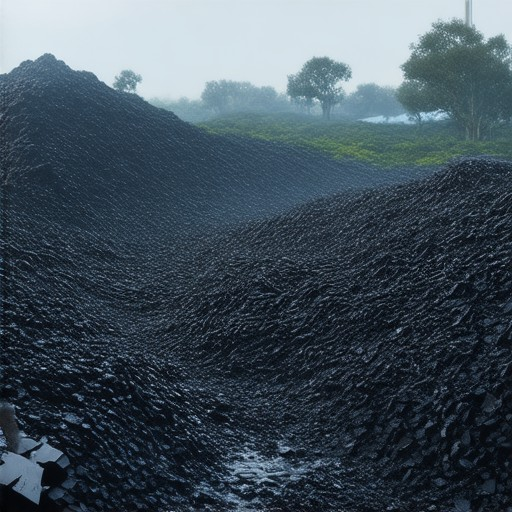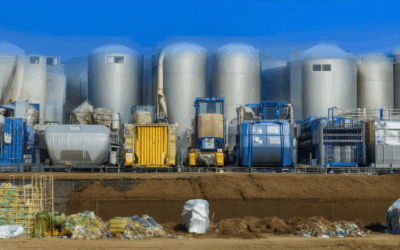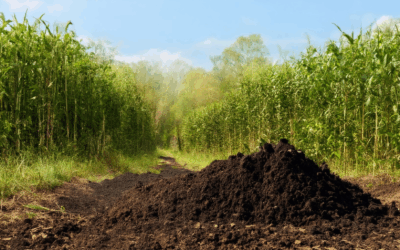As global concerns about waste management and climate change grow, innovative solutions are becoming increasingly essential. One such groundbreaking approach is the concept of zero-waste biochar solutions, a method that transforms organic waste into a valuable resource while simultaneously combating carbon emissions. This unique process not only addresses environmental challenges but also offers sustainable alternatives for industries seeking to reduce their ecological footprint. By exploring the intricacies of biochar production, its applications across sectors, and the challenges it faces, this article delves into the transformative potential of zero-waste biochar solutions.
Key Takeaways
– Biochar Costs: Producing 1 ton of biochar typically ranges from $300 to $700, with smaller operations falling between $200 and $300 per ton. Costs vary based on scale, technology, and location.
– Why Biochar is Expensive: High production costs, small-scale inefficiencies, transportation challenges, and competition with traditional fertilizers contribute to its higher price point.
– CO2 Sequestration: 1 ton of biochar effectively sequesters 2-3 tons of CO2, making it a valuable tool for carbon removal and environmental sustainability.

Drawbacks of Biochar
- Potential Contamination: Biochar may contain harmful substances such as dioxins, furans, chlorinated hydrocarbons, and polycyclic aromatic hydrocarbons (PAHs). These contaminants can pose serious health risks if ingested or inhaled.
- Environmental Impact: While biochar is often praised for its carbon-sequestration benefits, improper production or application can lead to negative environmental effects. Excessive use might cause drainage issues or disrupt soil health if not managed properly.
- Handling and Disposal Challenges: Biochar can be heavy and difficult to handle, leading to potential messiness during application. Improper disposal can also contribute to environmental contamination.
- Regulatory Gaps: In some regions, the production and sale of biochar may lack sufficient regulation, increasing the risk of distributing contaminated products that could harm users or the environment.
Why is biochar not widely used?
Biochar, a carbon-rich material produced through pyrolysis of organic waste, has significant potential as a sustainable agricultural amendment. However, its limited adoption can be attributed to several factors:
- Production Challenges : The process of creating biochar requires specific conditions, such as high temperatures and controlled environments, which can make it costly and energy-intensive. Additionally, the availability of suitable feedstocks is essential for consistent production, and this can vary depending on regional resources.
- Nutrient Sorption Issues : One of the primary concerns with biochar is its ability to adsorb nutrients, which can interfere with the effectiveness of conventional fertilizers. This characteristic may deter farmers who are accustomed to using chemical fertilizers and fear a reduction in crop yields.
- Public Awareness and Education : Biochar’s benefits are not widely understood, limiting its adoption. Many farmers and agricultural professionals are unaware of its potential to enhance soil health and crop resilience, which hinders its integration into farming practices.
- Regulatory Hurdles : Biochar may face regulatory challenges due to variability in product quality and concerns about contamination, such as heavy metals. These issues can create barriers for widespread acceptance and adoption.
- Market Competition : Established agricultural products, such as chemical fertilizers, dominate the market and offer familiar and reliable solutions. Biochar’s niche appeal may not yet outweigh the established competition.
- Cost Considerations : High production costs and uncertain market pricing can limit biochar’s accessibility. Unless it achieves a competitive edge in price and performance, it may struggle to gain broader acceptance.
- Adoption Barriers : Farmers often resist changes in practices that disrupt their existing systems. Biochar’s unique properties and required application methods may necessitate shifts in farming routines, which can be met with resistance.
These factors collectively contribute to the low adoption rate of biochar, despite its promising benefits for sustainable agriculture. As awareness grows and production efficiencies improve, biochar may become a more mainstream solution in the future.

How to Make Biochar from Waste
To create biochar from waste, follow these organized steps:
- Choose Suitable Feedstock: Select organic waste materials such as wood shavings, sawdust, agricultural residues, or manure. Avoid hazardous materials.
- Prepare Equipment: Use a metal container (e.g., a drum) with a lid and a heat-resistant lining. Attach a gas vent pipe for safe gas release. Utilize a reliable heat source like a propane burner or wood stove.
- Set Up Safety Measures: Ensure proper ventilation with a fan or open windows to prevent fume inhalation. Keep flammable materials away from heat sources.
- Heat the Material: Place the waste in the container, seal it, and heat at 500-600°C for about 30-60 minutes. Monitor the temperature and ensure minimal oxygen presence to encourage pyrolysis.
- Collect Biochar: After cooling, collect the black, porous biochar residue. Separate it from the remaining ash and gases.
- Optional Activation: Enhance biochar’s properties by adding steam or chemical activators to increase surface area and porosity, boosting its effectiveness as a soil amendment.
- Utilize Byproducts: Capture residual gases for potential reuse. Consider applications like composting or biogas production.
- Apply Biochar: Use biochar as a soil conditioner to improve fertility, reduce compaction, and suppress pests. It can also act as a carbon sink, aiding in carbon sequestration.
By following these steps, you can transform waste into a valuable resource, promoting sustainability and ecological benefits.

Cost of 1 Ton of Biochar
Biochar production costs typically range between $200 and $1000 per ton, with most producers averaging around $400 per ton. These costs can vary based on factors such as production scale, technology, and regional differences.
Small-scale biochar production units often fall on the lower end of this spectrum, costing approximately $200 to $300 per ton. Larger, more industrialized facilities may achieve economies of scale, reducing costs to between $300 and $600 per ton.
It’s important to note that these figures do not include additional expenses such as transportation, handling, or distribution, which can significantly increase the final price when purchasing biochar.
For precise pricing, it’s recommended to contact local biochar producers or suppliers, as market fluctuations and regional variations can influence the final cost.
Why is Biochar So Expensive?
Biochar is often perceived as an expensive product due to several factors affecting its production and distribution:
- High Production Costs:
- The process of creating biochar through pyrolysis requires significant energy input, often relying on fossil fuels, which contributes to production costs.
- Small-scale production facilities are common in many regions, limiting economies of scale and making each unit of biochar more expensive.
- Transportation Challenges:
- Shipping biomass from farms or waste sources to processing facilities can be costly, especially over long distances.
- Limited demand may result in higher costs as producers struggle to find markets for their product.
- Competition with Traditional Fertilizers:
- Biochar faces competition from cheaper conventional fertilizers, which can deter farmers and limit market penetration, indirectly increasing prices.
- Raw Material Availability:
- High-quality biomass, such as fruit tree prunings or animal manure, is essential for producing effective biochar. Sourcing these materials can be difficult and costly.
- Technological Limitations:
- Inefficient pyrolysis systems may yield lower outputs, increasing production costs. Optimization of these systems could help reduce expenses.
- Lack of Awareness:
- Limited understanding of biochar’s benefits among potential users can hinder adoption, keeping prices elevated as more consumers need to be educated on its uses.
By addressing these factors, such as improving production efficiency, expanding markets, and raising awareness, biochar costs may become more accessible in the future.

How Much CO2 Does 1 Ton of Biochar Sequester?
Biochar, produced through pyrolysis, sequesters a significant amount of CO2. On average, 1 ton of biochar can sequester between 2-3 tons of CO2. This process involves capturing carbon from organic biomass, which is then locked into the stable structure of biochar, preventing its return to the atmosphere for hundreds to thousands of years.
The carbon content in biochar typically ranges between 50% to 70% by weight. Assuming an average of 60%, 1 ton of biochar contains approximately 600 kilograms of carbon. Through the chemical conversion of carbon to CO2, this equates to roughly 2,200 kilograms of CO2 sequestered. However, this figure can vary based on the specific conditions of the pyrolysis process and the efficiency of CO2 capture.
It’s important to recognize that the exact amount may differ slightly depending on the method of production and the intended application of the biochar. Despite these variations, the sequestration of 2-3 tons of CO2 per ton of biochar underscores its role in contributing to carbon removal efforts.




0 Comments